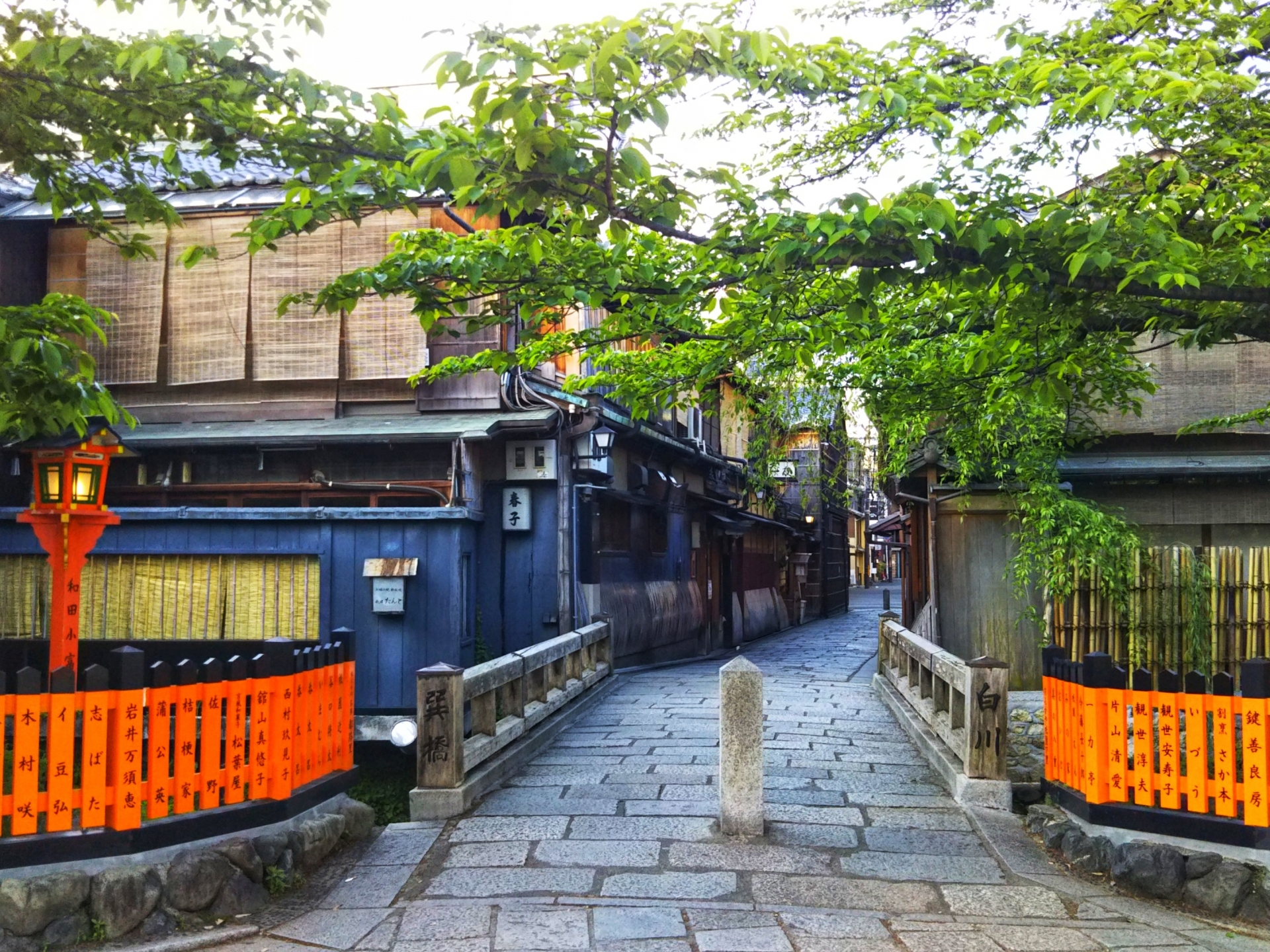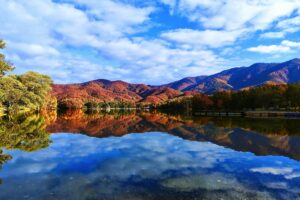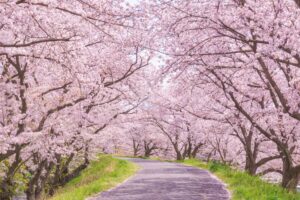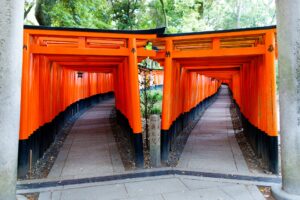Gion, nestled in the heart of Kyoto, stands as a testament to Japan’s rich cultural tapestry. Famed for its geisha traditions, well-preserved wooden machiya houses, and vibrant teahouses, Gion offers visitors a unique glimpse into a world where history and modernity coexist harmoniously. This article delves into the allure of Gion, guiding you through its storied streets, cultural landmarks, and the captivating experiences that await in this timeless district.
Understanding Gion: A Historical Overview
Gion, one of Kyoto’s most iconic districts, originated during the Heian Period as a rest area for travelers visiting Yasaka Shrine. Over the centuries, it transformed into a bustling entertainment district, becoming synonymous with geisha culture. Known locally as “geiko” and their apprentices as “maiko,” these performers epitomize Japanese refinement through their mastery of traditional arts such as dance, music, and tea ceremonies.
The architecture of Gion reflects Kyoto’s cultural richness. Traditional wooden machiya houses line the streets, some serving as teahouses where geisha entertain guests. These buildings, with their latticework and narrow facades, preserve the historic ambiance of the area, offering a glimpse into Japan’s Edo-period aesthetic.
In the modern era, Gion remains a cultural treasure. Events like the annual Gion Matsuri, one of Japan’s most celebrated festivals, showcase the district’s deep-rooted traditions. The preservation of geisha culture and the ongoing celebration of Kyoto’s heritage make Gion a bridge between Japan’s past and present.
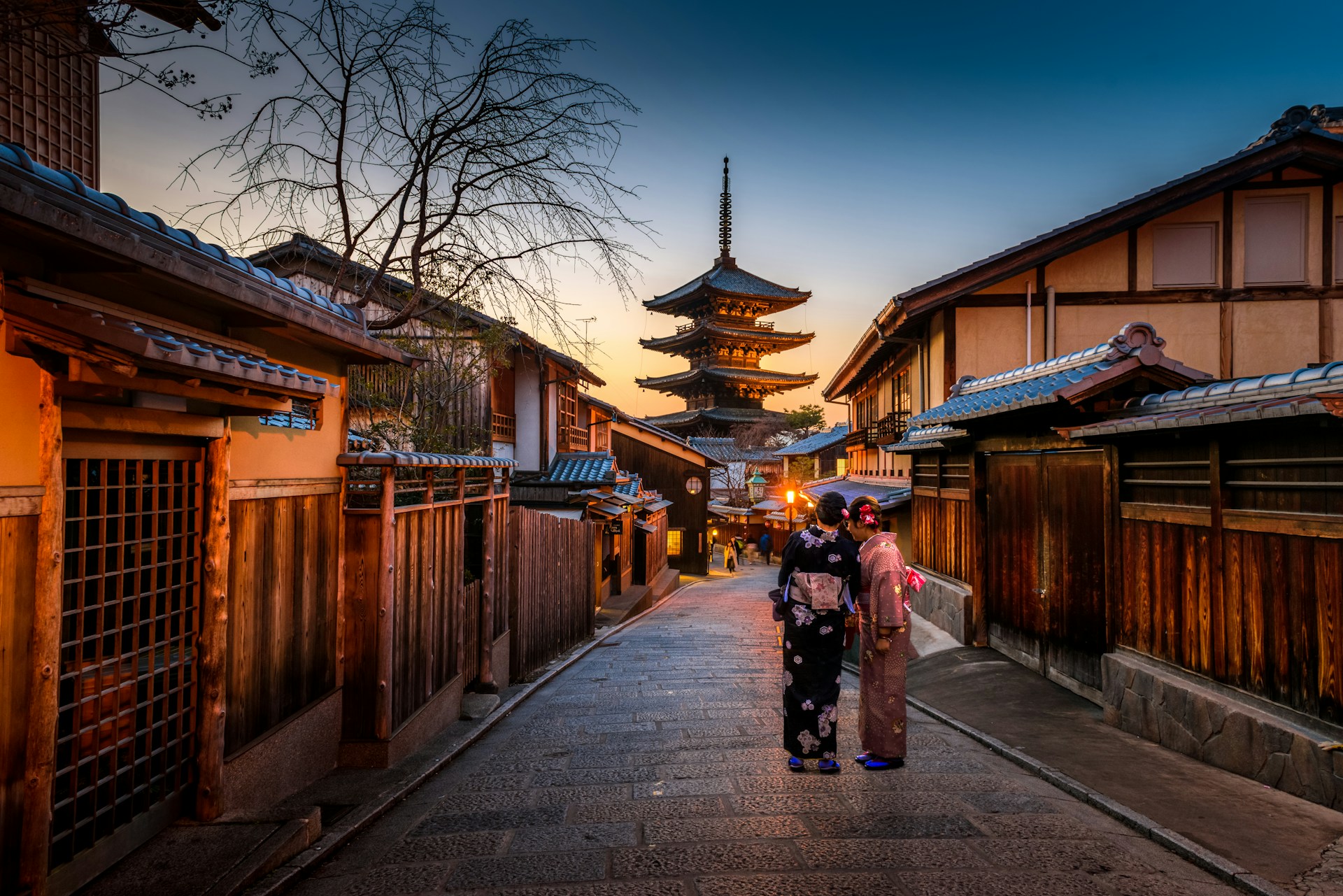
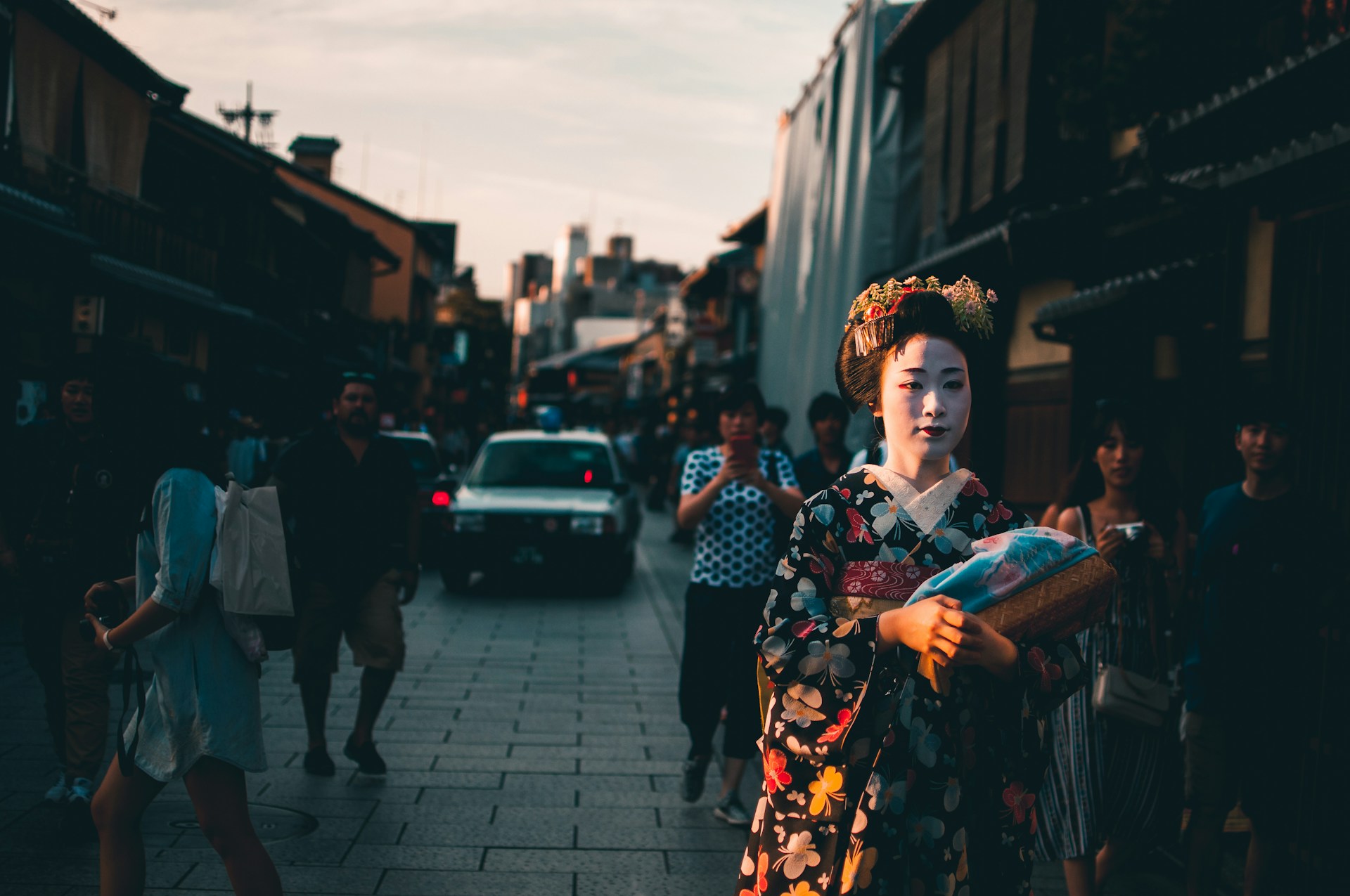
Exploring the Streets of Gion
Hanami-koji Street
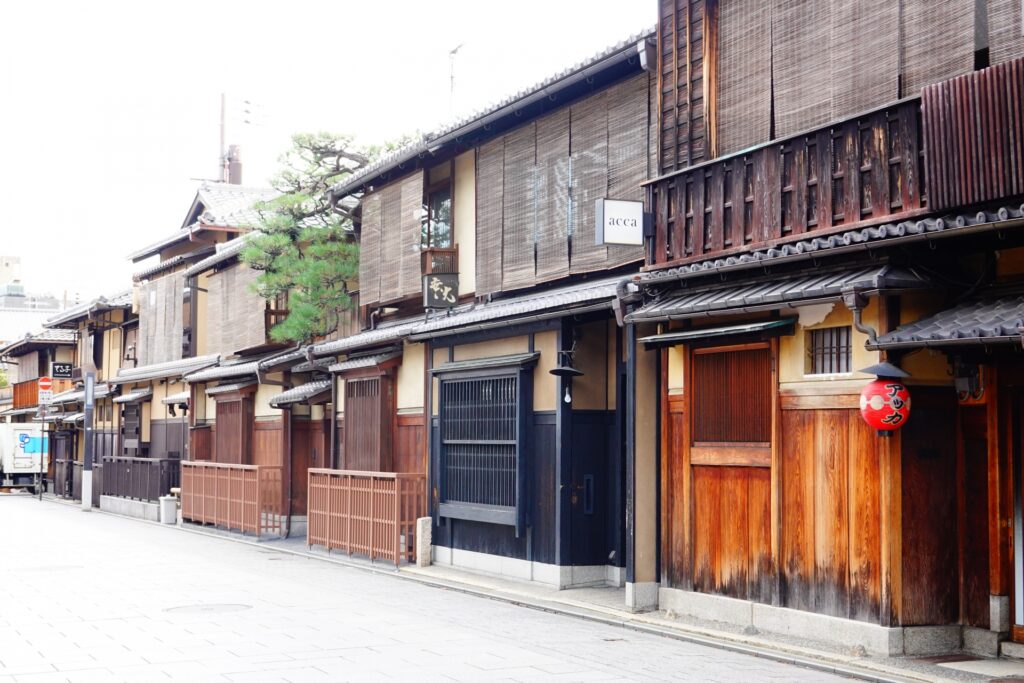
Hanami-koji Street is the heart of Gion, celebrated for its rows of machiya houses, converted into high-end restaurants, teahouses, and shops. This iconic street is a must-visit for its serene ambiance, particularly at dusk when lanterns illuminate the narrow alleyways.
- Things to Do: Visit a traditional teahouse, observe geiko or maiko walking to evening appointments, and enjoy kaiseki dining at local establishments.
- Tips: Respect the privacy of geisha and the local residents by refraining from intrusive photography.
Shirakawa Area
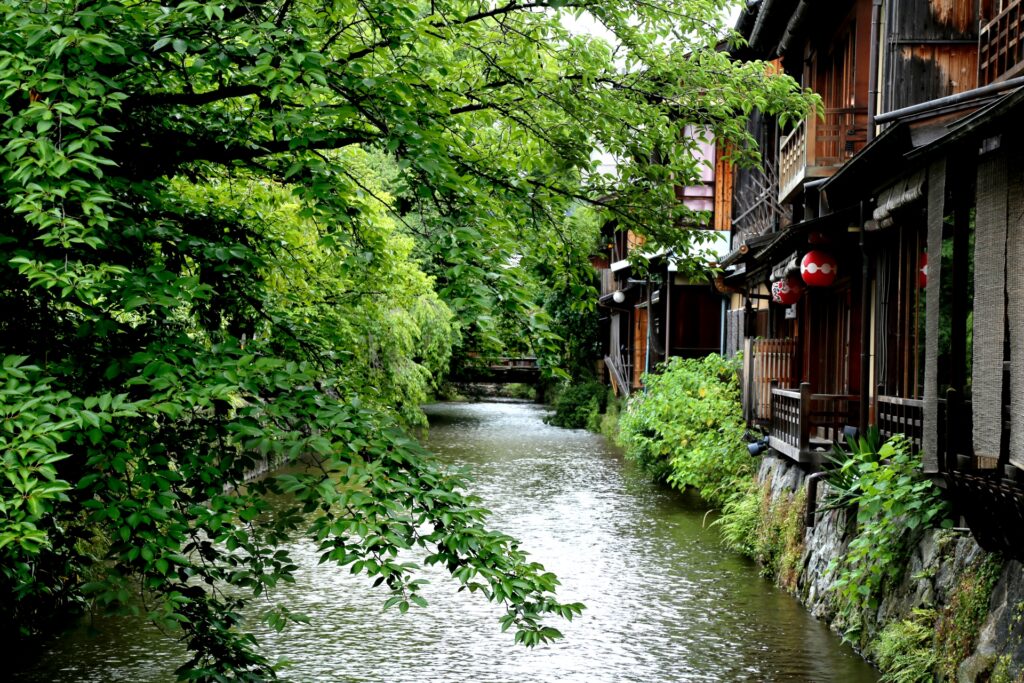
The Shirakawa Area offers a quieter, more romantic atmosphere. Running alongside the Shirakawa Canal, this part of Gion features weeping willows, stone-paved streets, and beautifully restored machiya houses. It’s especially picturesque during the cherry blossom season.
Geisha Culture in Gion
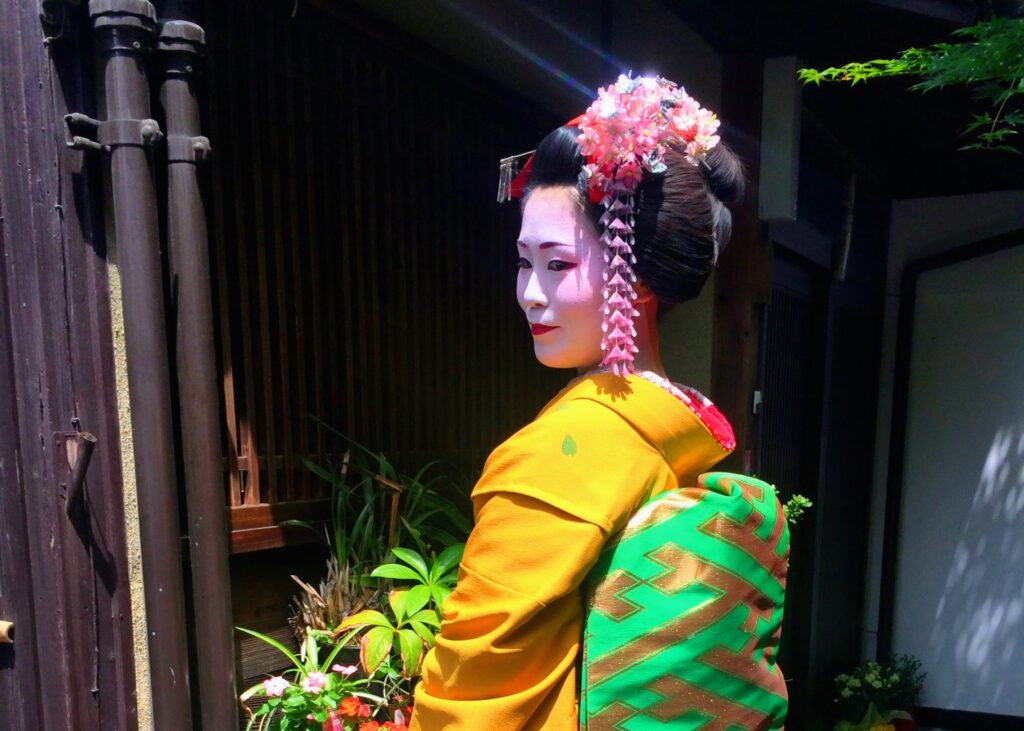
The Life of a Geiko and Maiko
Geiko and maiko in Gion undergo rigorous training in traditional arts. From dance and shamisen to tea ceremony etiquette, these performers embody Japanese cultural excellence. Visitors can experience their artistry at exclusive events or public performances at venues like the Gion Corner.
How to See Geisha in Gion
While spotting geiko or maiko on the streets is a highlight for many visitors, it’s important to respect their boundaries. To fully appreciate their craft, consider attending a geisha performance or arranging a private dinner experience through reputable agencies.
Modern Attractions in Gion
Gion’s charm extends beyond its traditional roots. The district offers contemporary experiences, from art galleries showcasing modern Japanese aesthetics to fusion cuisine restaurants blending traditional and international flavors.
Culinary Highlights
Gion is renowned for its culinary offerings, including:
- Traditional kaiseki meals served in teahouses.
- Local sweets like yatsuhashi, a cinnamon-flavored delicacy.
- Modern fusion restaurants introducing creative takes on Kyoto cuisine.
Shopping and Souvenirs
Boutiques in Gion offer everything from handcrafted ceramics to kimono fabrics. Visitors can also purchase artisanal goods that reflect Kyoto’s heritage, making perfect mementos of their trip.
Practical Information for Visiting Gion
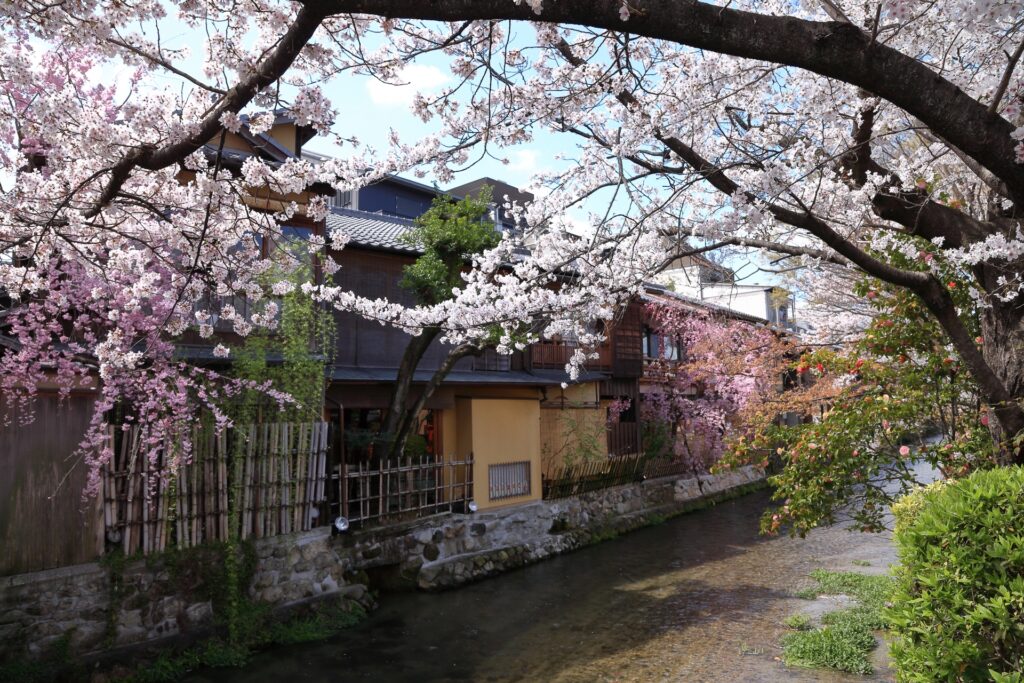
How to Get to Gion
Gion is easily accessible via public transport. From Kyoto Station, take the Keihan Line to Gion-Shijo Station or the city bus to Gion Bus Stop. The area is walkable, with key attractions within close proximity.
Best Time to Visit
- Spring (March-April): For cherry blossoms.
- Summer (July): During the vibrant Gion Matsuri.
- Autumn (November): For vivid fall foliage.
Preserving Gion’s Heritage
As tourism grows, the balance between preserving Gion’s cultural heritage and accommodating visitors is critical. Local initiatives promote responsible tourism, encouraging visitors to respect traditions, avoid disruptive behaviors, and support local artisans.
By diving into Gion’s past and present, visitors not only explore Kyoto’s cultural essence but also contribute to the preservation of one of Japan’s most treasured districts.

